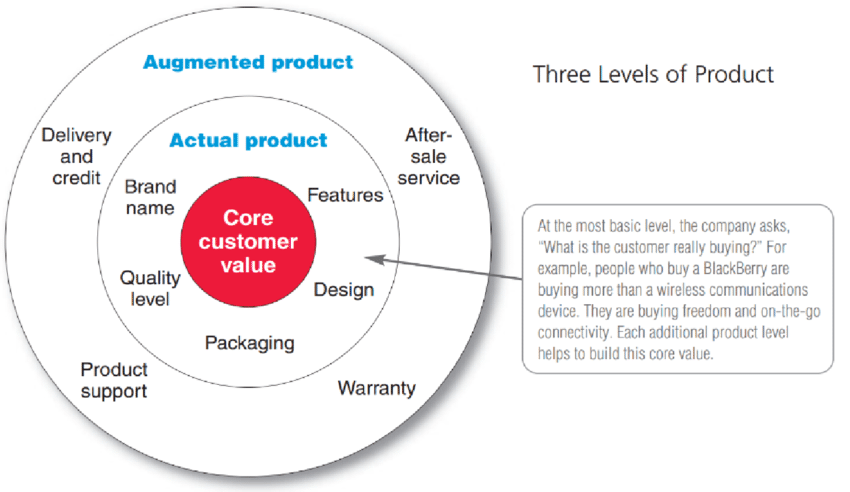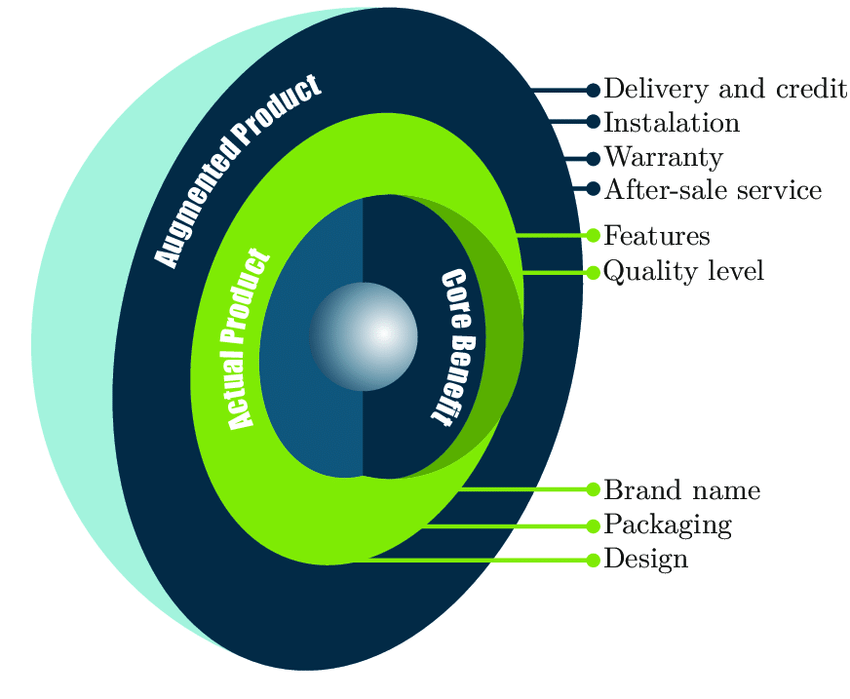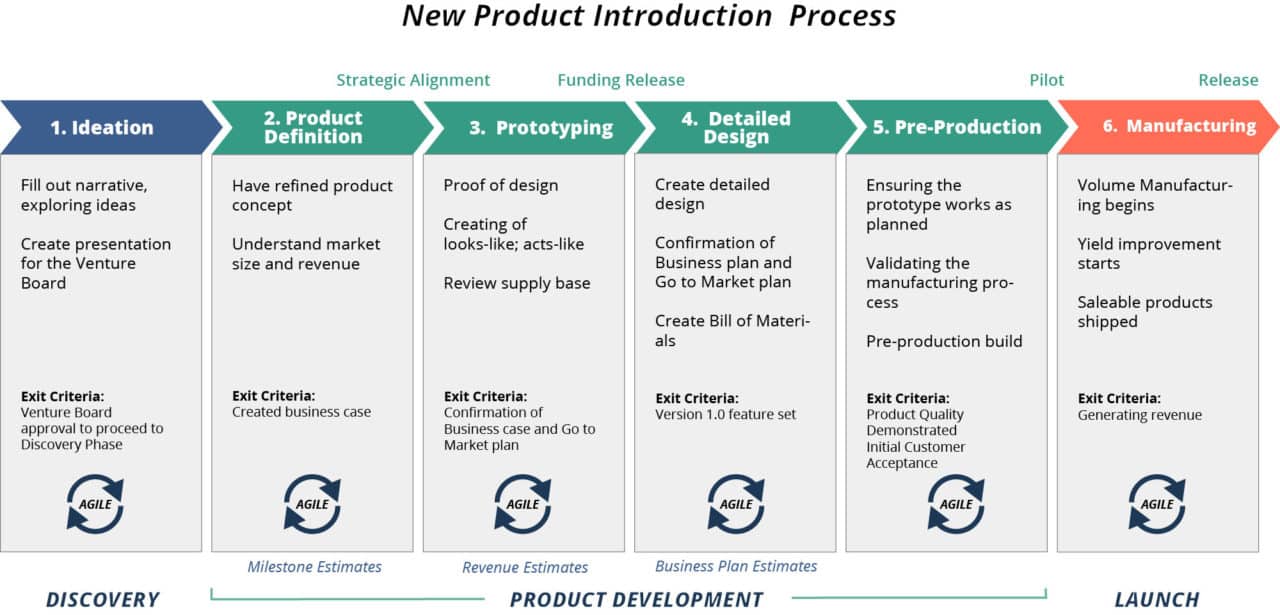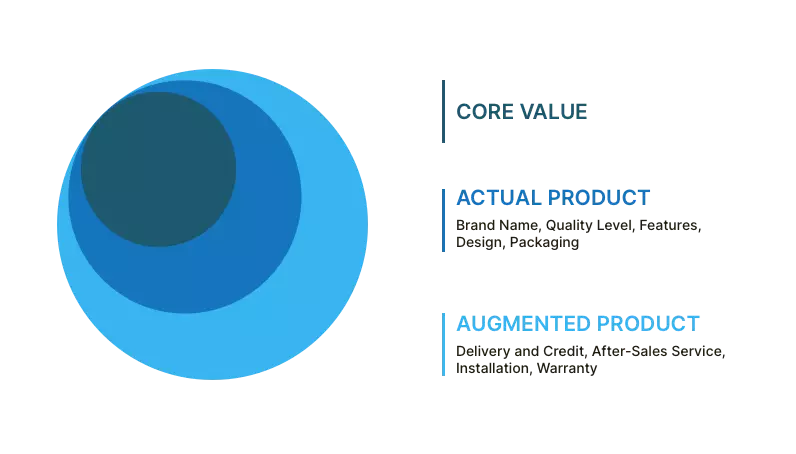The core product is the heart of any business, acting as a solid foundation for all business activities. It is the main product or service that the company creates to satisfy specific and essential needs of customers.
When discussing this product, we must not only stop at the obvious physical characteristics but also explore the intangible and deeper values. These elements are combined in a subtle and perfect way in the process of developing the product and building the marketing strategy, creating a tight connection, in which each component contributes to the brilliant success of the product.
The market is where customers’ desires and suppliers’ ability to meet them intersect. The core product, like a crown jewel, is the main product or service that the company has painstakingly developed to address specific and important customer needs.
The three levels of the product help customers gain a deeper understanding of the reason for the existence of the goods, the exquisite physical design and the valuable ancillary benefits it brings. These levels are perfectly combined in the product development and marketing strategy, creating a strong and lasting mutual relationship.

The core value that customers receive from a product does not stop at its basic solutions and physical aspects. Behind that, there are also intangible and abstract values that deeply affect the emotions and physical burdens of customers. It is these values that keep the demand for the item or service stable. When customers are willing to pay for the value that the item brings, that value will increase, creating greater profits for the business.
Three Levels of Product
To achieve complete success in the Sales Life Cycle, a product must pass through three levels of sophistication: Core product, Actual product, and Augmented product. Each level plays an important role in not only attracting but also retaining customers, ensuring long-term satisfaction and loyalty.

Core Product
The core product is the heart and soul of every product, formed from the essential needs of a large segment of society. Simply put, this is the core value or benefit that the product or service brings, meeting the basic needs of customers.
For example, the core of a tractor is its ability to make farming easier and more efficient. Without a solid core product, it is difficult for a business to start and grow successfully.
Actual Product
The actual product is the physical embodiment of the original idea, what the customer can see, hear, touch, smell, and taste. This is the item or service that the company directly provides.
For example, a Factory Introduction Video is a service that cannot be owned or held but is still considered a real product. The real product here is a video introducing the factory’s capacity, helping customers better understand the scale, production lines and products that the factory produces. Although the products of a promotional video production company are mainly digital and media, they are still at the level of real products because they can be seen, heard and felt.
These goods play an important role in promoting and branding a business, as well as effectively conveying messages to customers.
Augmented Product
The final level of the product includes all the additional benefits and features that come with it. The augmented product is the perfect blend between the core product and the actual product, providing superior value.
For example, the core of a phone is communication, but with modern technology, it is also equipped with many features such as taking photos, listening to music, connecting to the internet and playing games. Similarly, the core of a truck is a means of transportation, but enhanced features such as load capacity, safety measures and durability have increased its value.
When these levels are combined subtly and harmoniously, they create a product that not only meets customer needs but also delivers superior experiences that keep customers coming back and becoming loyal consumers.
Product Levels in the New Product Development Process
When preparing to launch a product, it must not only go through three product levels but also complete seven steps in the new product development process.
First step is idea generation, focusing on identifying a pressing market need or a service that is in high demand. This is where the core product takes shape, creating a strong idea to meet that need.
Step two is thorough research. Businesses need to gather all the information about their target market, why their product will stand out from existing products, and how to effectively reach their potential customer group.
Step three is the creation and testing of physical prototypes of goods. At this stage, the product is at the early stages of the actual product. This prototype needs to undergo rigorous testing to solve problems and overcome initial limitations. Packaging design also plays an important role, ensuring that the goods not only function well but are also visually appealing.
Step Four is to prepare for mass production. The company will have to structure its supply chain and develop a comprehensive production plan based on in-depth business analysis.
Step Five is the final prototype is completed and ready for testing along with the marketing strategy. This testing is often done with focus groups to gather critical feedback on the core, functional, and augmented levels of the product.
Step Six is to finalize the marketing strategy and put the item through final testing to ensure all aspects are working properly and ready for launch.
Finally, the seventh step is the official product launch and the implementation of a long-term commercialization plan. The enhanced product benefits will be the decisive factor in distinguishing the item from competitors with similar core or practical products.
These steps, when executed correctly and in harmony with the three product levels, create a perfect product development process that not only helps businesses meet customer needs but also delivers unique experiences and lasting value, turning customers into loyal advocates.

Through each step of the process, the perfect blend of product levels and development stages will ensure that your product not only fully meets customer needs but also delivers memorable experiences that will not only retain customers but also keep them coming back and becoming loyal advocates for your Brand.
Core Product Value
The core product is not simply the benefits or solutions that customers receive to meet their needs, but also the deeper economic value they deliver. This is ultimately reflected in the price that customers are willing to pay, which is influenced not only by the cost of production and components but also by the level of demand in the market.
Core products with the most sustainable growth potential are often those that effectively solve specific problems and create a strong emotional response from their target customer base.
For example, does this product help alleviate a customer’s burden? Does it significantly improve their quality of life? Are there enough people who have this or similar problems? These are important questions that businesses should consider when developing a product.
While there are many reasons why startups fail, the most common reason is the lack of a strong core value. This often leads to investors declining to invest or exiting the project before losing too much money.
Conversely, a clear and strong core value is the key to unlocking the door to success. When customers recognize the true value of the product, they will be willing to invest and become loyal consumers.
In the process of product development, identifying and building strong core values not only helps attract customers but also creates a solid foundation for sustainable business development.
Examples of Product Levels of Enterprises: Vinamilk
Vinamilk proud to be the leading milk brand in Vietnam, has affirmed itself with quality products and constant innovation.
Core products: Vinamilk provides milk and dairy products, providing essential nutritional solutions for consumers. This is the foundation of all products, meeting basic needs for health and development.
Actual product: Designed to suit modern life, Vinamilk offers a diverse range of products such as fresh milk, yogurt, condensed milk and powdered milk, all conveniently packaged and easy to use, to bring the best convenience and experience to customers.
Supplementary products: Not only stopping at basic products, Vinamilk also enhances the value with enhanced products. Products such as drinking yogurt supplemented with beneficial bacteria for the digestive system, specialized nutritional milk for the elderly, children and pregnant women. In addition, the company also implements health and nutrition promotion campaigns, contributing to highlighting its commitment to comprehensive care for community health.
With the sophisticated combination of these product levels, Vinamilk not only meets the basic needs of consumers but also provides excellent nutritional solutions, creating sustainable and long-term values for customers and the community.
Epilogue
To capture the core value that customers assign to an item, businesses need to understand the common problems that a group of consumers face and then create a product or service that can effectively solve those problems, thereby meeting the deep needs of customers.
The three product levels provide insight into how an item can go beyond its basic value. The core level is the foundation of any good, the functional level is the concrete embodiment of that idea, and the augmented level is the additional benefits that enrich the customer experience.
By analyzing the product levels in marketing strategies, businesses can clearly identify the essential elements that create real value for customers. This not only helps products meet consumer needs but also provides memorable experiences, promotes loyalty and strengthens the sustainable development of the business.
Comment Policy: We truly value your comments and appreciate the time you take to share your thoughts and feedback with us. Note: Comments that are identified as spam or purely promotional will be removed. To enhance your commenting experience, consider creating a Gravatar account. By adding an avatar and using the same Email here, your comments will feature a unique and recognizable avatar, making it easier for other members to identify you. Please use a valid email address so you can receive notifications when your comments receive replies.
